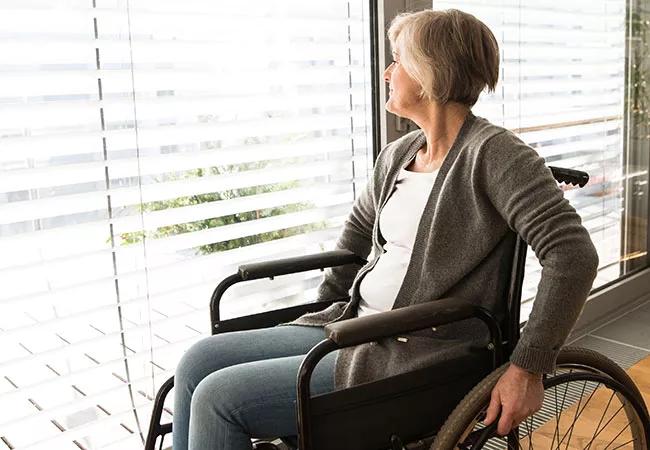Large survey shows wide variability in risk tolerance, high levels of risk aversion

Individuals with multiple sclerosis (MS) show wide variability in their levels of risk tolerance to MS therapies, concludes the most comprehensive study of the issue reported to date.
Advertisement
Cleveland Clinic is a non-profit academic medical center. Advertising on our site helps support our mission. We do not endorse non-Cleveland Clinic products or services. Policy
The Cleveland Clinic-led study, recently published in Neurology (2019 Mar 19 [Epub ahead of print]), carries implications for how MS clinicians may better guide patients toward individualized treatment choices, says lead author Robert Fox, MD, a neurologist with Cleveland Clinic’s Mellen Center for Multiple Sclerosis Treatment and Research. “Understanding variations in risk perception and tolerance can ultimately lead to greater patient satisfaction with therapy choices — and perhaps better treatment adherence,” he explains.
Dr. Fox and colleagues invited people with MS from the North American Research Committee on Multiple Sclerosis Registry (NARCOMS) and the National Multiple Sclerosis Society website to complete an online survey on their tolerance to real-world risks associated with a hypothetical disease-modifying therapy (DMT) for MS.
After being told the DMT would yield a fixed benefit — i.e., a 50 percent reduction in relapses and 30 percent slowing of disability — survey participants were asked if they would take the therapy if it were associated with a specific risk that occurs at a rate of 1 in 1,000 people. If they responded yes, they were asked if they would take it if the risk level were higher — say, 1 in 100 people. If they responded no, they were asked if they’d take the medication if the risk were lower — say, 1 in 10,000 people. Multiple risk levels were presented to pinpoint respondents’ maximum tolerance for each of six adverse effects associated with actual commercially available DMTs:
Advertisement
The survey was completed by 3,171 people with MS (mean age, 55.1 years) over a one-month period in 2016. Key findings included the following:
Dr. Fox acknowledges that the survey was limited by a single fixed benefit (50-percent relapse reduction plus 30-percent disability slowing) and its focus on just six potential — albeit commonly reported — risks of DMTs.
“Nevertheless,” he observes, “identifying the best therapy for a patient involves not only assessing a medication’s benefits and risks but also an awareness of the patient’s perception of acceptable risk. These findings outline some general trends around those perceptions and underscore the importance of initiating conversations about acceptable risks, given the large heterogeneity we found in patient perceptions and comfort levels.”
Advertisement
An accompanying editorial in Neurology echoes that view: “Fox et al. provide cause for serious reflection on the issue of MS patient perception of, and response to, the risks involved in DMTs,” write editorialists Gavin V. McDonnell, MD, from Northern Ireland, and James J. Marriott, MD, from Canada. Noting concern “that so many patients are apparently averse to any level of risk for what many would perceive to be a reasonable level of benefit,” the editorialists conclude that “it is incumbent on us to develop strategies for communicating both treatment risks and benefits effectively and succinctly.”
Advertisement
Advertisement

Cleveland Clinic researchers awarded $3.2 million for first-of-its-kind investigation

Researchers identify the neurologic evolution of pain-related learning

Various AR approaches affect symptom frequency and duration differently

Dopamine agonist performs in patients with early stage and advanced disease

Validated scale provides a method for understanding how lifestyle may protect against Alzheimer's

Promising preclinical research indicates functional motor recovery is durable

A principal investigator of the landmark longitudinal study shares interesting observations to date

Cleveland Clinic researchers collaborate with Microsoft to create a product ready for the field